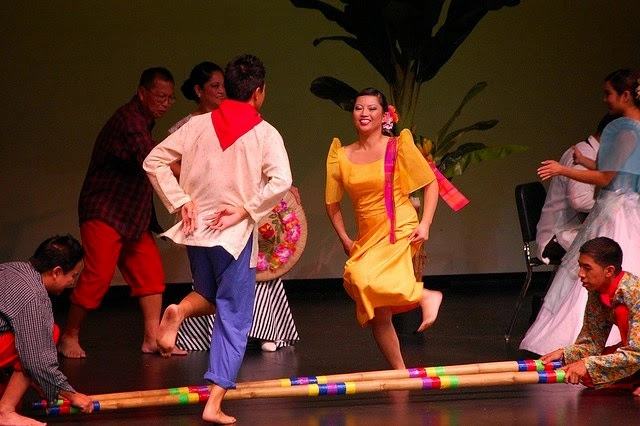Why Dance Therapy Matters
When I first learned about dance therapy, I realized I had been practicing it all my life without knowing the term. Dance therapy is the use of movement to support emotional, mental, and even physical well-being. Whether you’re dancing in your living room or performing on stage, the act of moving your body can ease stress, unlock emotions, and bring you back to yourself.
Dance isn’t just about performance. It’s about healing in motion. Through rhythm, movement, and expression, we find a way to say the things we often cannot put into words.
From Folk to Hip-Hop: My Journey with Dance


My story with dance started in kindergarten with simple interpretative performances, where hand gestures and flowing movements told stories even our young voices couldn’t yet express. Those early dances sparked something in me—a realization that movement could carry meaning beyond words.
As I grew older, I found myself drawn to folk dances like tinikling, the Philippines’ national dance. I still remember the sound of bamboo poles clashing, the rhythm of folk songs, and the careful timing each step required. Those moments taught me discipline, coordination, and the joy of moving in harmony with music and people around me.
By high school and college, my style shifted into hip-hop, and it quickly became my language. Each lock, pop, and tutting sequence, those sharp and rhythmic hip-hop gestures, felt like a sentence. Every routine was like a page from my journal.
While my friends expressed themselves through writing or drawing, I found my freedom in dance. It was my way of turning unsaid feelings into motion, channeling emotions I didn’t always know how to speak out loud.
Competitions, school events, and casual group practices gave me a stage to perform. But the real joy often came when no one was watching—those late-night solo sessions in my room where I could move freely without pressure or judgment. Dance became both my outlet and my safe space, guiding me through every season of life.
The Science and Emotion of Dance Movement Therapy
So, what makes dance movement therapy more than just exercise? At its core, this practice is about using movement to process emotions and heal. Unlike traditional workouts, the focus isn’t on burning calories or perfecting form. Instead, it’s about how your body can become a powerful tool for expression. It doesn’t matter if you know choreography or not. What matters is that your movements, whether graceful or messy, become a voice for feelings you might not be able to put into words.
Studies in psychology and neuroscience show that dancing impacts both the body and the brain in measurable ways. For example, research highlights that dance can:
- Lower stress hormones like cortisol help calm the nervous system and reduce feelings of anxiety.
- Boost mood and energy by releasing endorphins, the brain’s natural feel-good chemicals.
- Improve brain function, memory, and focus, as the combination of rhythm and movement engages multiple areas of the brain.
- Unlock emotions that might feel stuck inside, giving people an outlet to process grief, anger, or joy in nonverbal ways.
But beyond science, it’s the emotional release that makes dance therapy so powerful. Maybe you’ve felt it too—when anxiety seems to melt after a freestyle jam in your room, or when heartbreak softens as you sway to a slow song. Dance becomes a safe container where you can let your body carry emotions that feel too heavy to speak out loud.
Each step, sway, or jump is a way of letting go of what weighs you down. Movement allows you to connect with your inner self while also reminding you that your body is capable of resilience and renewal.
Whether you’re moving in silence, following the beat of a drum, or dancing to your favorite playlist, the goal isn’t performance. It’s about feeling lighter, freer, and more connected to yourself.
Dancing Beyond the Studio: From Home to Social Trends
The beauty of dance therapy is that you don’t need a studio, a teacher, or even a polished routine to experience its benefits. Some of the most healing movements happen in the most ordinary places. While you’re stirring a pot in the kitchen, stretching in your bedroom when no one is watching, or moving freely in front of the mirror just to shake off the day’s tension. These little moments prove that dance doesn’t have to be formal or structured. It can simply be about listening to your body and letting it move in a way that feels good.
If you want to make dance part of your daily self-care, try weaving it into your routine in simple ways:
- Put on a song and move however your body wants. Don’t worry about rhythm or steps, just follow the beat.
- Try YouTube tutorials for simple routines. Many are beginner-friendly and make learning new moves both fun and accessible.
- Create your own short ritual for stress release. For example, a two-minute dance break after work or before bed can help reset your mood.
- Use instrumental or calming music for free-flow movement. This can feel almost meditative, letting your body release tension while your mind quiets down.
Beyond personal practice, dance has taken on a new life online. TikTok challenges and Instagram reels have turned movement into a shared cultural experience. While these short clips may seem like entertainment, they remind us of something bigger: dance creates community and joy. Even if you’re dancing alone in your room, joining a trend connects you to thousands, even millions, of others moving to the same rhythm.
The amazing part is that these viral dances, whether goofy or skillful, often leave you laughing, sweating, and feeling lighter. They show that healing doesn’t always require silence or solitude. Sometimes, it’s about sharing a beat with others across the globe. From solo dances at home to global challenges online, movement is everywhere. It proves that healing doesn’t only happen in therapy rooms, but it can happen in the everyday rhythms of life.
FAQs About Dance Therapy
1. Do I need to be a good dancer to try dance therapy?
Not at all. Dance therapy focuses on expression, not performance. Anyone can try it, regardless of skill level.
2. Can dance movement therapy help with mental health conditions?
Yes. According to the National Library of Medicine, it can support people dealing with anxiety, depression, trauma, and even certain neurological conditions. It should not replace medical care, but it can be a valuable complement.
3. How often should I practice dance therapy?
There’s no strict rule. Even 10–15 minutes a few times a week can provide benefits. The key is consistency and intention.
Step Into Your Healing Rhythm
Dance has always been more than performance for me. It’s my way of releasing emotions, reconnecting with myself, and finding joy in motion. And the best part? You don’t need fancy skills, expensive classes, or a stage to experience the same.
So, the next time life feels heavy, put on a song, close your eyes, and let your body guide you. Healing may not always come in words, but it can come in movement.
Your body holds the rhythm of your healing. All you need to do is start moving.
Share your dance journey in the comments or with a friend to start your healing rhythm today.





0 Comments